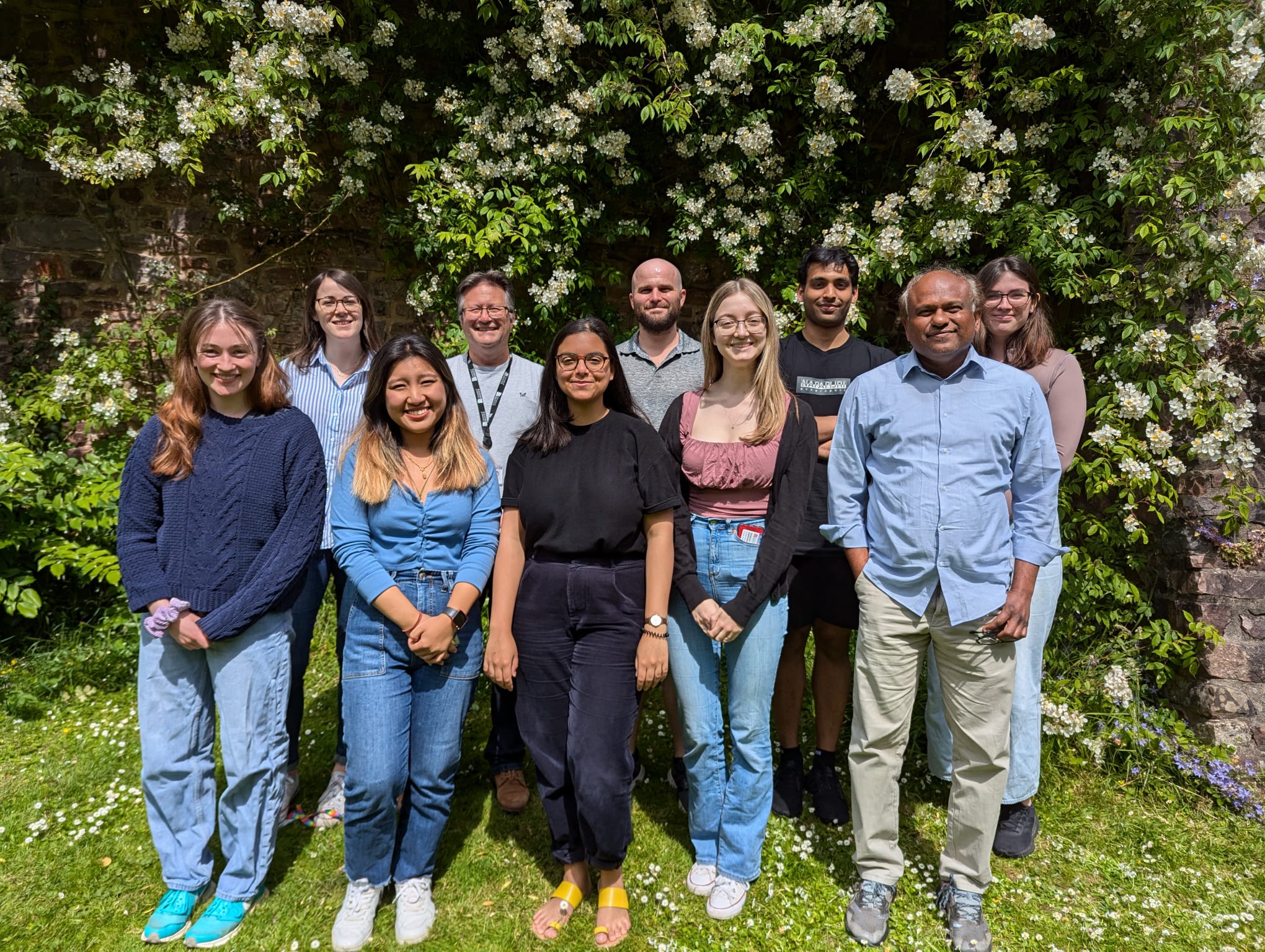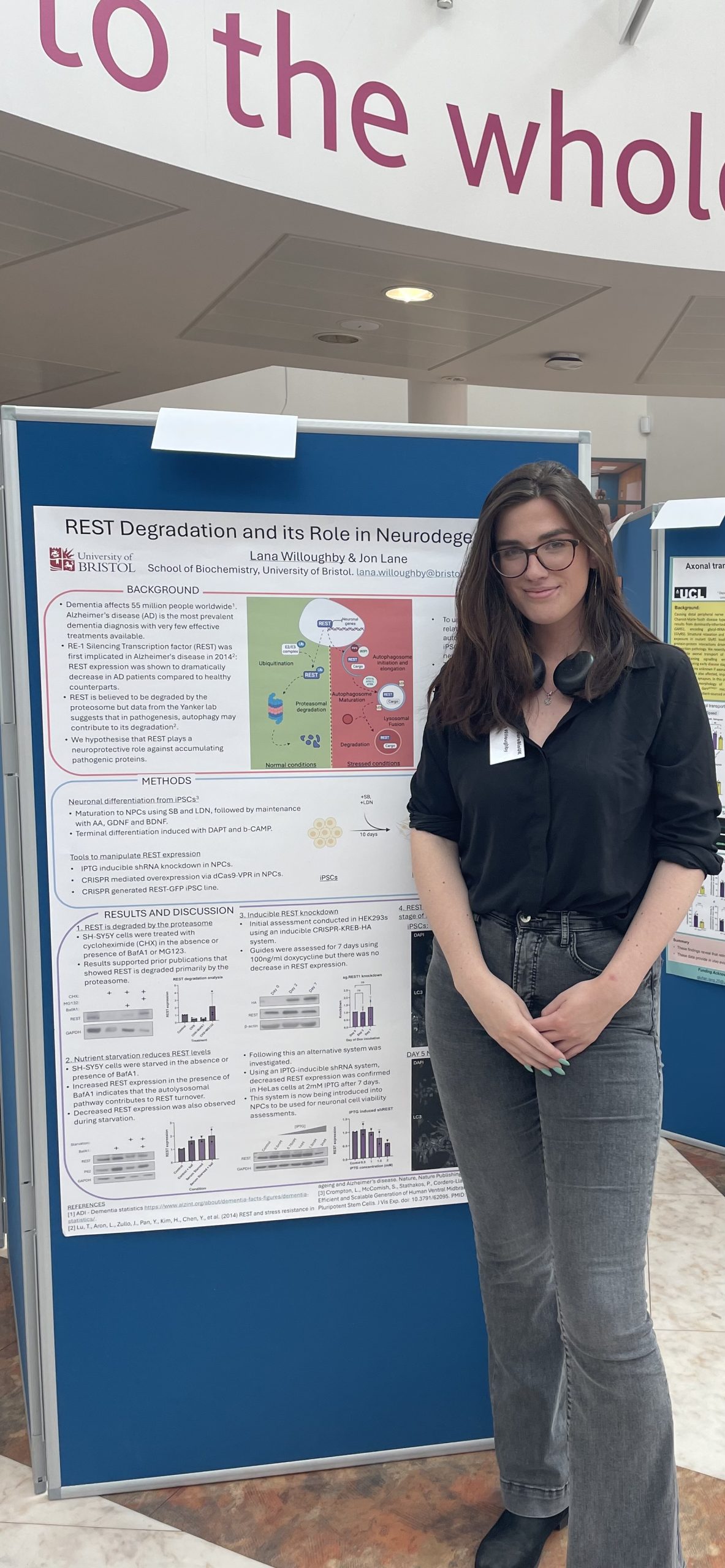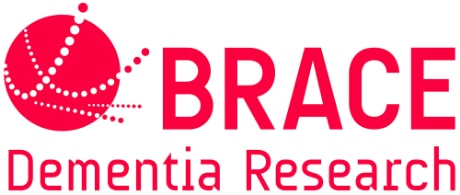
Professor Jon Lane
PhD: University of Bristol, 2023 │ PhD Student: Lana Willoughby
Exploring the role of anti-stress pathways in dementia.
Summary
Professor Jon Lane and his research team are investigating the anti-stress pathways in the brain. They are looking at how a protein called REST impacts cell death in dementia.
What do we already know?
Dementia is a set of symptoms that cause a decline in cognitive functions like memory, language, and problem-solving. It affects different parts of the brain and leads to the death of neurons. Multiple genetic and environmental factors can contribute to dementia. They often act through different pathways in the brain but show similar clinical symptoms.
Autophagy, or "self-eating," is a cellular process that clears away faulty proteins, damaged cells, and toxins. It plays a protective role against stress and disease, and interacts with REST.
REST (RE1-silencing transcription factor) is a protein that is involved in one of the anti-stress pathways in the brain. It regulates the suppression of genes responsible for cell death and autophagy. REST levels increase with age to help maintain neuron health. However, in dementia, there is evidence that autophagy could potentially degrade REST, removing this healthy build-up that happens with ageing.
What is this project trying to find out?
This study aims to understand how REST impacts autophagy. Professor Jon Lane and his team will study what happens to neurons when REST is removed, and test whether autophagy is involved in this process. They will also explore how REST and autophagy work together to preserve neuronal health.
This study will also test how REST impacts brain cells that usually support neurons, as they can become harmful under stress.
What has been achieved so far?
Professor Jon Lane has been making progress in creating stem cell-based models to study how the REST protein affects brain cells and neurodegeneration. The research team has been working with different types of lab-grown cells, including SH-SY5Y cells (brain-cancer cell line that can become “neuron-like") and iPSC-derived neurons (stem cells turned into neurons).
To better understand REST, they have tried altering its amount in cells. This has worked well in simple cells, but doing the same in stem cell models has been much harder.
The researchers have also been studying where REST is located inside cells. Through this, they have discovered that certain chemical changes to REST, especially glycosylation (addition of sugar molecules to the protein), may affect how it works. They are also testing how REST helps to protect cells from stress and improves their survival.
Another ongoing project is using CRISPR gene editing to attach a fluorescent tag to REST. This would allow researchers to see where REST is inside living cells.
The BRACE-Funded PhD student Lana Willoughby has gained many new skills including iPSC differentiation techniques, cell fractionation, CRISPR, cloning, immunoblotting, qRT-PCR, confocal microscopy, data analysis, and presentation.
What obstacles have been experienced?
“Maintaining healthy neurons in the lab has been difficult. It is important to let neurons grow for at least 50 days for them to fully mature. However, a big problem is that after about 15 days, the cells start falling off the plates they are grown on because the attachments become unstable. I have been working hard to fix this issue, currently the ‘oldest’ neurons have been grown to 28 days with expectation for this to increase further.
Another challenge is that neuronal stem cells are very sensitive. Even a little bit of stress can cause them to turn into other types of cells instead of neurons. Also, it takes a long time to grow neurons. To make this easier, I am in the process of obtaining iNeurons, a type of neuron that can be made from stem cells in about 3 weeks. However, the process has been slower than expected, and it hasn’t been fully completed yet.”
Why is this important?
If this research is successful, it could help scientists understand what affects memory and thinking in Alzheimer’s disease. It could also show why REST, a protein that helps protect brain cells, disappears in the disease. This research could result in the ability to develop treatments that keep REST stable and stop it from breaking down, which could help improve brain function and slow down the disease.

“I am extremely grateful to BRACE for funding my research project, which has allowed me to conduct critical research into understanding how our brains age and the challenges of dementia. The training I have received has helped me to deepen my understanding and develop vital skills.
My goal is to contribute to the global body of knowledge that is needed to develop more effective treatments for Alzheimer’s Disease and, thanks to BRACE support, I am one step closer to doing so. Thanks so much for your help.” - Lana Willoughby, BRACE-funded PhD student
Share this page
